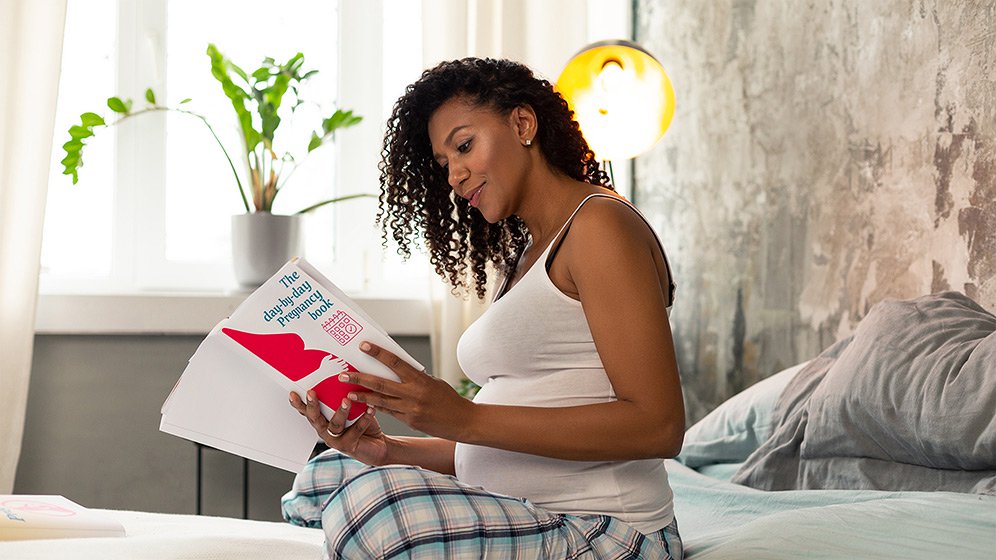What Does a Faint Line on a Pregnancy Test Mean?

When you take a pregnancy test, the control line shows that the test is working, and the test line shows the results. If a second line appears (pink or blue) – even a faint one – the test has detected the pregnancy hormone in your urine. See your healthcare provider to confirm you are pregnant.
Sometimes people confuse other lines on pregnancy tests for a positive result. The important thing to look for is a second line that develops color. A shadowy, shiny, colorless mark on a pregnancy test is not a positive. If you’re ever unsure of your pregnancy test result, repeat using another test, or see your doctor.
How Does a Pregnancy Test Work?
For a quick primer, at-home pregnancy tests check your urine for Human Chorionic Gonadotropin hormone, or hCG, which ramps up quickly in your body after fertilization. The lines on a pregnancy test develop color if hCG is detected.
An at-home First Response™ pregnancy test works like this:
- Special reagents are deposited at 2 locations on a pregnancy test strip, forming the “control line” and the “test line.”
- These test reagents may appear as off-white/slightly gray lines on the test strip – before or after use. In a First Response™ pregnancy test, these reagents are gold nanoparticles, which appear pink in color. They are responsible for turning the lines pink once the test is used.
- If no hCG is detected in your urine, only the control line will appear pink colored. If hCG is present in the urine, both the test line and control line will appear pink. Two pink lines indicate a positive result, even if one line is fainter than the other.
Some tests, like First Response™ Early Result Pregnancy Tests, are very sensitive and can detect lower levels of hCG so you can test as early as 6 days sooner.*
What is a Control Line on a Pregnancy Test?

The control line lets you know the test is working correctly. Every non-digital pregnancy test has two lines that are either parallel to each other or form a plus sign. The control line is not a positive result.
If a control line does not appear after exposing the test to urine, the test is not working properly. You should dispose of the pregnancy test and use another one.
What is the Test Line on a Pregnancy Test?

The test line is the line that appears on an at-home pregnancy test if hCG is detected in your urine. If this line does not change color – turning pink for First Response™ – then the test did not detect hCG and you are most likely not pregnant.
In many cases, when you are using a First Response™ test, the test line may be a fainter pink than the control line, which is sometimes quite dark. A test line can be faint pink if your urine is diluted or it’s very early in your pregnancy. Not-to-worry, though. Even a faintly pink-colored test line indicates a positive result. Simply put, if there is color on the test line, it’s time to check in with your doctor to confirm a pregnancy.
I’m Still Not Sure if it’s a Faint Positive
Follow these tips for what to do if you’re unsure about your pregnancy test result:
- Wait a couple days and test again if you still haven’t gotten your period.
- Take the test first thing in the morning or after holding your urine for several hours.
- Open the test envelope and use it right away (always check to make sure it’s not expired first).
- Have a First Response pregnancy test on hand for when you expect your period. You can use First Response Early Result Pregnancy Test or the Digital Pregnancy Test as soon as 6 days before your expected period or the Rapid Result Pregnancy Test on the day of your missed period.
Testing with a First Response Pregnancy Test
There are a variety of First Response pregnancy tests to choose from when you want to see if you are pregnant. The First Response™ Triple Check Pregnancy Test Kit includes three different types of pregnancy tests all in one box. For added assurance, First Response™ Comfort Check Pregnancy Test Pack comes with 3 First Response™ Early Result Tests and 5 First Response™ Pregnancy Test Strips, so you can test early and often.
For flexibility and confidence in your testing journey, the First Response™ Multi Check Pregnancy Test Kit offers 3 pregnancy tests: 1 EasyCup with a built-in strip for results in 5 minutes and 2 Rapid Result pregnancy tests for results in just 1 minute, providing multiple ways to confirm your result.
And as always, visit your doctor for confirmation if you suspect a pregnancy test may be positive.
* FIRST RESPONSE™ detects the pregnancy hormone 6 days sooner than the day of your missed period (5 days before the day of expected period). In laboratory testing, First Response Early Result Pregnancy Test detected the pregnancy hormone levels in 76% of pregnant women 5 days before their expected period. See package for details about testing early.



